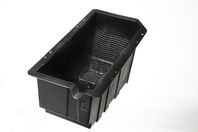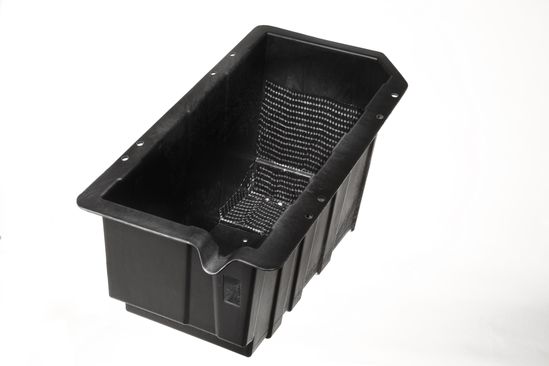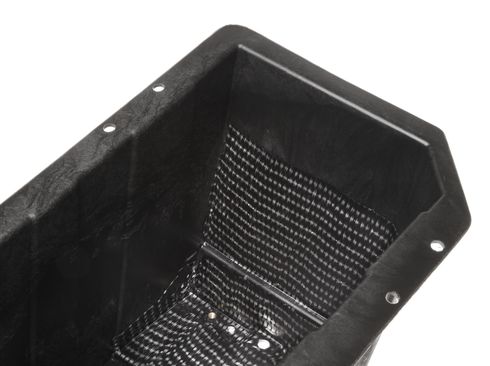Asia
EMEA

LANXESS Canada Contacts
Contact our Sites in Canada
Media Inquiries
General Inquiries
Please click here to e-mail LANXESS Canada with product inquiries and general requests.
Global Press Releases
2016-03-09
High-performance composite from Bond-Laminates for van battery consoles
Excellent crash behavior in both hot and cold conditions
- Replaces inserts made of glass- and polypropylene fibers
- High strength, stiffness and toughness at low temperatures
- Trend toward Tepex as a reinforcing material in compression molding
Tepex continuous-fiber-reinforced high-performance composites are continuing to establish themselves in automotive lightweight construction. The semi-finished products from LANXESS subsidiary Bond-Laminates are increasingly being used to reinforce components made of fiber-reinforced thermoplastic compression molding compounds in areas subjected to high stress. The latest example is the battery console of a van produced by a German car manufacturer. This is produced in a DLFT (direct long fiber thermoplastic) process from a polypropylene compression molding compound reinforced with long glass fibers and an overlay made of Tepex dynalite 104-RGUD600. Tepex is used instead of an insert based on a consolidated hybrid yarn fabric made of glass and polypropylene fibers. “The replacement was made possible because the console reinforced with our material passes the recently tightened crash test for the component. This is thanks to our composite’s high stiffness, strength and toughness across a wide temperature range,” explains Harri Dittmar, applications developer for Tepex.
Crash test passed including at -30 °C and +85 °C
The 320 x 230 millimeter Tepex insert is 0.5 millimeters thick. It comprises a single-layer fabric containing 47 percent by volume continuous glass fiber rovings largely aligned in the same direction that is fully consolidated, impregnated and embedded in a polypropylene matrix. The insert reinforces the front wall of the console, which may be hit by the top of the battery in an accident. The 29-kilogram battery must not break through the wall. An impact at a speed of 50.4 km/h is tested in the crash test, where forces around 45 times that of gravity – and thus more than one metric ton – act on the wall. “Consoles reinforced with our inserts meet the test conditions including for the new tests at -30 °C and +85 °C. In contrast, the previous component solution fails at these temperatures,” says Dittmar. A penetration test to DIN EN ISO 6603-2 is one example that shows how tough the composite material grade is. It is around eight to nine times more impact-resistant at room temperature than a pure DLFT compression molding compound based on polypropylene. The stiffness of the console is six times greater than a DLFT component manufactured solely from polypropylene and three times greater than the replaced design.
Cost-effective DLFT process
Dittmar expects Tepex dynalite to be used more frequently in the future in automotive engineering for various components relevant in crash scenarios for targeted local reinforcement of DLFT flow molding compounds: “Tepex boosts the performance of the cost-effective DLFT molding compounds and expands their range of uses. DLFT compression molds are also much more cost-effective than injection molds.” As well as battery consoles, other possible applications include battery holders and various vehicle undercarriage components.
LANXESS is a leading specialty chemicals company with sales of EUR 8.0 billion in 2014 and about 16,300 employees in 29 countries. The company is currently represented at 52 production sites worldwide. The core business of LANXESS is the development, manufacturing and marketing of plastics, rubber, intermediates and specialty chemicals. LANXESS is a member of the leading sustainability indices Dow Jones Sustainability Index (DJSI World) and FTSE4Good.
- Gallery






